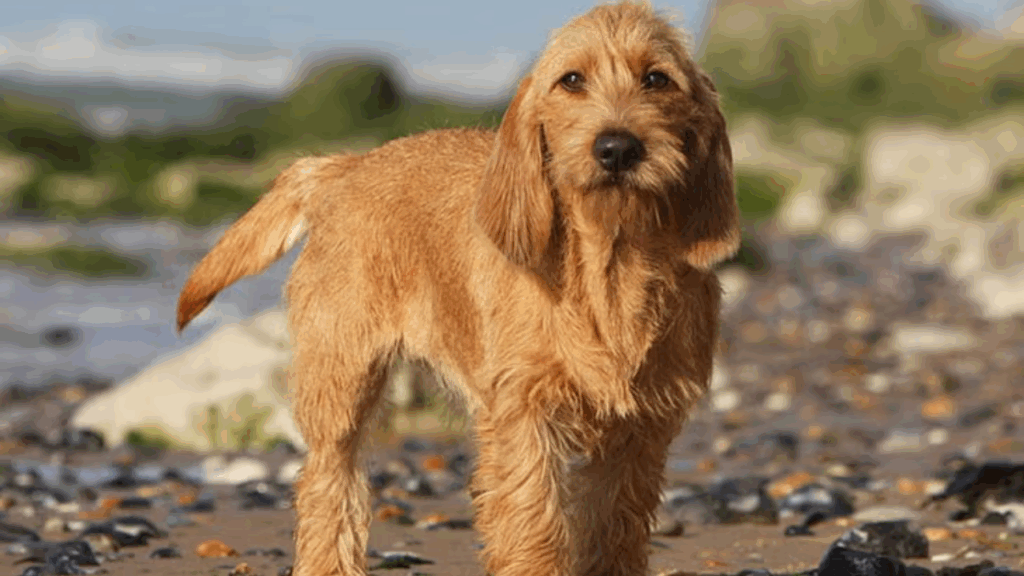The Basset Fauve de Bretagne is a small yet spirited scent hound from France, cherished for its bold nature, compact size, and affectionate personality. Though lesser known than some of its hound cousins, this breed boasts an impressive history, a charming demeanor, and a lively spirit that makes it a wonderful companion for active families and experienced dog owners.
Origins and History
The Basset Fauve de Bretagne hails from the Brittany region of France, with its name literally translating to “Short-legged fawn-colored dog of Brittany.” The breed was developed in the 16th century from the larger Griffon Fauve de Bretagne, a now-rare breed used primarily for hunting wolves and boar. When the need for large hunting hounds decreased, breeders began to focus on smaller, more versatile hounds that could hunt rabbits, hares, and other small game.
The result was a compact, resilient, and agile dog with a keen nose and tireless drive. Though the breed came close to extinction after World War II, dedicated French breeders revived it, and today, the Basset Fauve de Bretagne is a popular hunting and companion dog in France and gaining recognition elsewhere.
Appearance
Despite its diminutive size, the Basset Fauve de Bretagne is athletic, sturdy, and full of character. It has the classic long-backed, short-legged appearance typical of bassets, but with a more agile and energetic build.
Key features include:
- Height: 12.5 to 15.5 inches
- Weight: 25 to 35 pounds
- Coat: Harsh, dense, and wiry
- Color: Always fawn, ranging from golden wheat to reddish tan
- Ears: Set low and medium in length, slightly turned inward
- Eyes: Dark, oval, and expressive
- Tail: Medium length and slightly curved, carried like a sickle
This breed’s rugged, weather-resistant coat and compact frame make it perfectly suited for navigating rough terrain and thick underbrush during hunts.
Temperament and Personality
Don’t be fooled by the small stature—this little dog is full of personality, energy, and determination. Basset Fauve de Bretagnes are known for being cheerful, outgoing, and playful, as well as extremely loyal to their families.
Temperament highlights:
- Friendly and affectionate: They love human company and are particularly good with children
- Energetic and inquisitive: They require regular mental and physical stimulation
- Independent but trainable: They possess a typical hound’s stubborn streak but are eager to please
- Alert and brave: Willing to protect their home with enthusiasm, even if they’re not aggressive
- Sociable with other dogs: Their pack-dog background makes them good with canine companions
These dogs have a bright and determined disposition, which makes them delightful to live with, as long as their energy and curiosity are well managed.
Training and Exercise
Training a Basset Fauve de Bretagne requires a balance of patience and consistency. While smart and quick to learn, they are also independent thinkers who like to test boundaries.
Training tips:
- Use positive reinforcement—treats, play, and praise work best
- Keep training sessions short and fun to hold their attention
- Start socialization early to develop a well-rounded temperament
- Be consistent and firm, as they may try to charm their way out of rules
In terms of exercise, this breed is active and athletic. A daily walk isn’t enough—these dogs thrive with plenty of physical and mental stimulation, such as:
- Long walks or hikes
- Scent games and tracking exercises
- Agility or obedience classes
- Interactive toys or puzzle feeders
Grooming and Health
The Basset Fauve de Bretagne has a low-maintenance coat, but it does require regular attention to keep it clean and healthy.
Grooming routine:
- Brush 1–2 times per week to remove loose hair and prevent matting
- Hand-stripping may be needed to maintain coat texture
- Clean ears regularly to prevent infections
- Trim nails and brush teeth routinely
Health-wise, this is a robust and generally healthy breed, though it can be prone to:
- Ear infections (due to floppy ears)
- Hip dysplasia
- Eye issues
- Obesity if overfed or under-exercised
With proper care, the Basset Fauve de Bretagne enjoys a lifespan of 12–14 years.
Ideal Living Situation
The Basset Fauve de Bretagne adapts well to a variety of environments, but it is best suited to active households that can keep up with its energy and enthusiasm.
Best living conditions include:
- Homes with a secure yard for supervised play
- Families who enjoy outdoor adventures
- Dog owners with some experience in training independent breeds
- Environments with plenty of stimulation and interaction
Final Thoughts
The Basset Fauve de Bretagne is a joyful, hardy, and intelligent dog that brings energy and warmth into any home. With its keen nose, loving temperament, and mischievous sparkle, this breed is equally at home on the trail or curled up beside you after a long day. Whether you’re a hunter, a hiker, or just someone who loves cheerful, clever dogs, the Basset Fauve de Bretagne makes for a loyal and delightful companion

Andy Parker is a dog lover, writer, and senior editor at BarkPicks. With years of experience covering canine health, training, and gear, he helps pet parents make smarter choices for happier, healthier dogs. Andy shares his home (and heart) with two rescue pups, Charlie and Mia.



